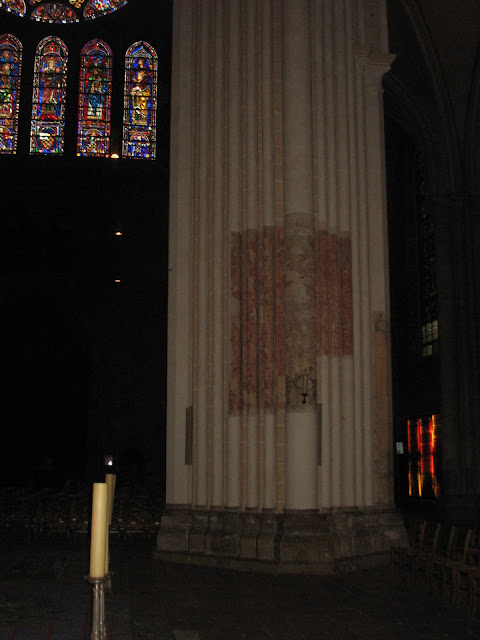"The “Bigorre” or “Noir de Bigorre” is a very ancient European breed of a black pig, with a black hide and narrow, horizontal ears. Although known for its strength and robustness, this is a likable creature due to a calm temperament and domestic nature.
This breed was fairly dominant until the 1970s. As it’s not suited to intensive livestock farming, they quickly began to disappear until a handful of dedicated supporters set out to “save the beast” in the ’80s. Since the early 1990s, approximately fifty breeders, two ham curers, and five pork butcher-caterers formed a conservation association. They have since established strict specifications for the care of and production of Noir de Bigorre, thus sustaining the breed for future generations."https://fr.wikipedia.org/wiki/Porc_gascon
And so our story of the pigs in the pasture began:
We selected two "Bigorre" pigs from a nearby farm in St. Sever de Rustan. They each weighed around 45 kilos and were the size of a hefty Cocker Spaniel, although heavier.
This pen was used to weigh the pigs. Clearly, they can not be expected to stand quietly on the scale! The farmer chose two she thought were of similar size, wrangled them into the pen to be weighed. Slick system!
We were quite surprised by the condition of their farm. There were different holding areas. From securely fenced pastures to individual stalls (11) for females and their babies to spacious open areas near the barn with overhead canvas to provide shade, hold young males or females ready to be sold, and every single area appeared to have been recently cleaned. We were invited to come "whenever you wish" so they didn't clean knowing of our arrival! VERY impressed.
Expat neighbors van came in very handy for transport back to Montegut. Ray and Kitty Brown have become our "partners in crime." No crimes, just a lot of very unique experiences!
We used the same enclosure and fencing arrangement that the lambs enjoyed last year. The pigs were placed in the pen and immediately found a paradise of organic snacks!
A thick growth of various plants of which they soon made short work.
Happy pigs!
Pig "Eden" Quince, Plum, and Pear trees provide some shade. They settled in quickly to their new home.
Fast forward TWO months!! They sure made short order of the vegetation.
Eating became a competitive sport!
They grew rapidly with premium feed, hay, and baskets of fallen pears, plums, figs, and peaches.
We could tell them apart by their tails, one "curled" to the right the other to the left!
When they weren't eating, they "rooted" in the soil. Using their strong and tough snout as a shovel, they made short work of any soft soil. Together they managed to create deep trenches in several shaded areas where they enjoyed the cooler earth temperature.
Bigger and bigger.
They have nearly tripled in size and eaten nearly 2 hundred pounds of feed and vegetable and fruit scraps from two households twice a day. They also receive grass clippings along with a steady supply of culled fruit from the orchards' various fruit trees. They are particularly fond of the fig tree.
And if you have, thanks for reading.
Au Revoir!





























